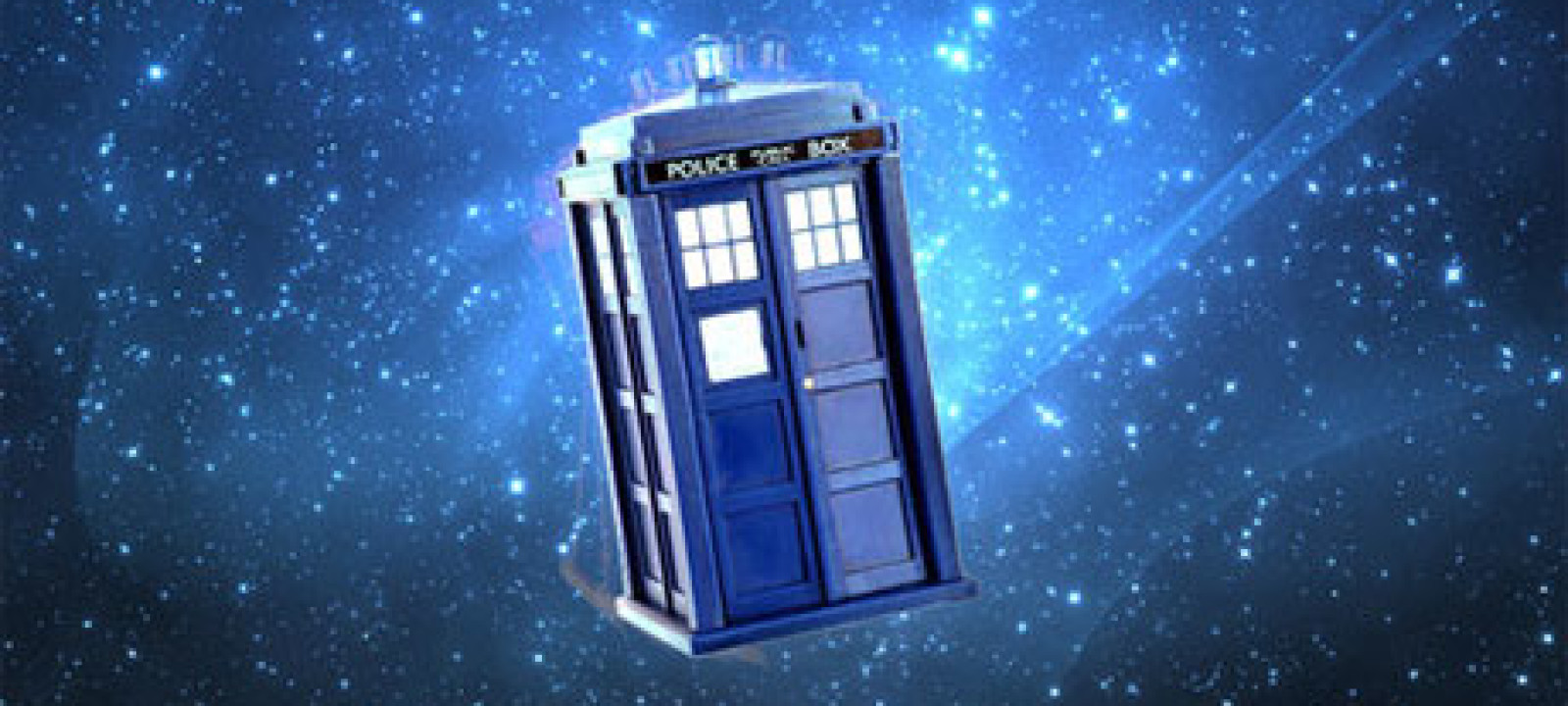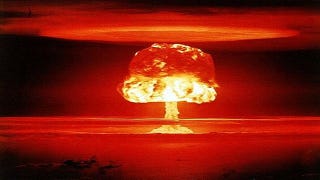 |
| Since I'm absolutely positive that EA will never make a good C&C again. |
That said, I once did a fictional AltHistory scenario on the first C&C here, well over a year and a half ago, and I think it's time to revisit the grandfather of all RTS games, this time with it's slightly loopy and campy B-movie quality of it's brother, Red Alert 1.
So, Point of Divergence. Hmmm... This is actually harder than I thought, mostly because RA1 is an alternate history already, asking "what if Albert Einstein built a time machine and erased Hitler from history?" And, considering all the talk about Nazi's today, I'd rather not get into that right now...
Well, the games themselves feature the heroic Allies fighting the brutal Soviets for control of Europe, introducing new technologies and desperate tactics to try to change the tide of battle: attack dogs, flamethrowers, Tesla coils, double barreled Mammoth Tanks, nuclear weapons, invulnerability and teleportation devices... the list goes on. Oh, and Tanya.
But, there is one thing about Red Alert 1 that popped up, but then never came up again...
 |
| Who is that handsome guy in the back there? Zoom in! |
 |
| ... damn low resolutions. Find a better picture for this joke! |
 |
| Ahah! You magnificent bald, goateed bastard Kane, you! |
An aborted attempt to tie the Red Alert series to the original Command & Conquer, the Tiberium series.
Now, over the years, a myth, persay, has developed on how this tie together would work. But this scenario never struck me as likely, because it was that a Soviet Victory in the "Second World War" of this timeline was what would lead to the establishment of the Global Defense Initiative and the emergence of the Brotherhood of Nod. But it just doesn't feel right to me, that, the Soviet Union manages to conquer all of Europe but then allows a United Nations organization (which should never have been established in this alternate timeline) to then build a global military force. It just always struck me as wrong that the Soviet's would allow something like that to happen, or that the United Nations would be formed, and then in turn form GDI, after a collapse of the USSR.
No, my headcanon for tying RA1 and C&C1 together involves an Allied Victory.
"But wait!" the C&C fans would begin to bellow. "The Allied Victory is what leads to Red Alert 2, and then to Red Alert 3! So it can't be used for C&C1. How can that work?"
Ah, well here is where it gets weird: I say that Red Alert 1 and 2 are both in the timeline.
 |
| Not sure what he's confused about. Most likely why watermarks are hovering all over him. |
Okay, let me explain.
So, we start with Einstein going back in time in the late 1940s, killing Hitler, and returning to his time, just to see the Soviets rise up, and try to take over Europe. With the United States still isolationist, it's all up to Europe (including a non-Nazi Germany) to unite and hold back the Soviets, forming the Allies, or, rather, the United Nations. It was only after the USSR tried to develop atomic bombs that the US joined the United Nations, sending men, weapons and supplies to help the beleaguered Allies, and invade Russia itself, and topple Stalin, and the USSR.
After this, the US and her European Allies begin to rebuild, and Michael Romanov is placed in charge of the much smaller Soviet Union. But in the 1970s, with the USSR rebuilt and gearing up for revenge, they launch a multi-pronged attack on the United States, which wasn't the great military power it was in OTL because it only helped at the very end of the previous World War, and then went back to a semi-isolationist stance, content that the damn Commies are contained. But now with the US the prime target of the USSR (with their mind control agents, attack squids, missile launching battleships and flying airships of death), and the Allies (which have dolphins, tanks that turn into trees, weather control superweapons and, of course, Tanya), perhaps because the US didn't come to their immediate aid or because they were afraid of the Soviet Union, wouldn't join until later, at which point the Allies manage to overcome the destruction, and bring down the USSR.
Up until now, this is based on the lore of the first two Red Alert games. Now is where the Wibbly Wobbly, Timey Wimey stuff comes into play.
 |
| That noise you hear is Daleks allying with the Brotherhood of Nod and the Soviets. |
The expansion for Red Alert 2 featured a campaign by the psychic Yuri trying to take over the world. Now, in the Allied Campaign, at the last mission, there is a... thing that happens, where the screen gets all wobbly, and the "timelines merge" with the ending of Red Alert 2. And with the world now at peace, and the United Nations dominate, all the major powers agree to dismantle, or at least decommission their most advanced weapons, with many of the blueprints being destroyed or locked away. And, with all of Europe, North America and Russia now a war torn ruin, and with no "superpower" to easily fill in the slot, the United Nations forms several unified military commands. One of which, after some name changes (including the catchy Operations Group Echo: Black Ops Nine) becomes the Global Defense Initiative.
"But wait! What about Red Alert 3?"
Simple: it's a branching timeline from the end of Red Alert 2, but it's not the "main" timeline of our history, perhaps branching after Cherdenko (SPACE!) activates his time machine before Yuri's mind control starts? It's an alternate scenario of the events of Red Alert 2, and therefore not associated with the Tiberium Timeline.
"And Kane? And the Brotherhood of Nod?"
Ahh, well here is where they finally come in: they have always been an enigmatic, mysterious organization, and mentioned all the way back in the 1950s. If I remember correctly, there is even something at the end of the RA1 campaign where someone mentions they didn't find all of Stalin's advisors. It's quite simple to assume that Kane and the Brotherhood went into hiding for the events of RA2, and only emerged afterwards when Tiberium finally arrived on Earth.
 |
| This was really the Scrin's way of welcoming Humanity to the spacefaring community. A planet warming gift. |
"Then why didn't the Allies/GDI just take the weapons from the previous war and use them?"
Well, what says they didn't? Well, some of the technology, at least. For example, Nod's Stealth tank? What if it's a refinement on the Mirage Tanks of Red Alert 2, just they don't turn into trees now. And the Apocalypse tank could have been used to build the first Mammoth Tanks for GDI. But other technology, like the Iron Curtain, Chronosphere, Weather Control Device, Prism Tanks and others would have degraded, or purposefully/accidently destroyed over the forty some years between the war in Red Alert 2, and the late 1990s/early 2000s that Tiberium Dawn takes place. Even if they had the blueprints, it would take time to rebuild it all, if it wasn't seen as not useful: after all, GDI isn't exactly running on a big budget, and even has its budget cut halfway through the campaign after Nod media manipulation. So I don't see GDI investing in trying to rebuild old technology, most of which may only have limited use on the modern battlefield, after years of rusting in bunkers and warehouses around the world.
So, this does take some leaps of faith and assumptions, but this is how I would tie the two branches of Command & Conquer together. Is it perfect? No: after all, why would the allies give up on, say, Prism tanks after showing their usefulness? Though, there have been efforts to restrict and eliminate certain types of weapon over time, so I could see that happening here as well. But, I think it provides a somewhat satisfactory explanation for the two timelines intersecting.
But what do you think? How do you think the timelines of Command and Conquer being tied together, or if they should at all? If you have a comment or a suggestion, leave a comment below, email me at tbguy1992@gmail.com or look for me on Twitter, @tbguy1992.





















